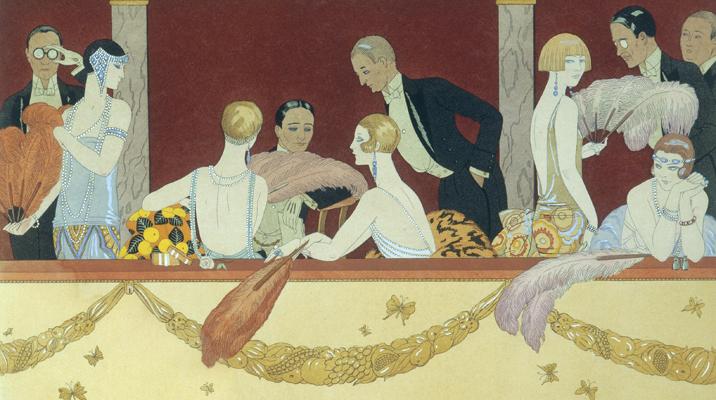The Roaring Twenties: Spirit Of The Age

Fashion is an industry that thrives on decadence, and its stars are among the most decadent party-throwers of all.
Supermodel Kate Moss has hosted some of the most notorious bashes of modern times - from her riotous week-long party that kicked off at Claridge's to the mini-festival at her Cotswolds home, complete with yurts. Photographer Mario Testino, whose impossibly glossy pictures have defined modern glamour, celebrated his 60th birthday at London's Chiltern Firehouse with a cast of models and a performance by Kylie Minogue. And the theme they return to again and again? The Roaring Twenties. F Scott Fitzgerald's The Great Gatsby, set during the dangerous, opulent madness of the Jazz Age in America, was the inspiration for Testino's party and Moss's legendary The Beautiful and Damned-themed 30th. So what is it about the period that has cast such an enduring spell over thrill-seekers old and new?
The Twenties spirit - a thirst for rule-breaking and excitement - was the result of a perfect storm of circumstances that ignited a social and cultural explosion. World War I had produced mass destruction on a scale never seen before in the West, with some 40 million losing their lives - a generation of young men dubbed the Lost Generation. Writers and artists including Fitzgerald, Ezra Pound and Henri Matisse reacted by rejecting the traditional notions of duty and patriotism and presenting radical new ideas.
In the United States, the post-war period gave rise to an unstoppable economic boom, with the stock market soaring. In 1920, the 18th Amendment, banning the production and sale of alcohol, was passed and, after years of struggle, women were given the vote. The Harlem Renaissance in New York saw a wave of African-American artists and musicians such as Louis Armstrong and Billie Holiday create a new jazz sound. Dancing a conga line into this powder keg came the speakeasy. Prohibition did nothing to stop demand for alcohol - indeed, quite the opposite. So bootlegging - the illegal production of alcohol - flourished, alongside illicit underground clubs in which to drink it. Fashion, meanwhile, began to set the hedonistic young crowd free - for the first time, men began wearing more casual, sports-inspired clothes during the day, instead of formal suiting. Their tight, high-waisted jackets and narrow trousers were replaced by looser blazers and wide Oxford bags. For evening, tailcoats and stiff detachable-collar dress shirts gave way to shorter tuxedo jackets and comfortable shirts with softer collars.
Perhaps in these grimly challenging times, we're nostalgic for the heady atmosphere of Fitzgerald's novel, where guests at Jay Gatsby's parties felt elevated - high on champagne and a sense of the forbidden. At the centre of it all is Gatsby himself - the stylish, secretive conman. He was dressed by Fitzgerald in Turnbull & Asser shirts - in fact, a memorable scene sees him fling piles of the 'beautiful shirts' in the air, prompting paramour Daisy to cry. Pulling on a Beetley Silk Blazer with its flamboyant red illustrated print, or T&A's iconic Great Gatsby shirt with rounded, 1920-style contrasting collar and corresponding tie, may not take you back to a real speakeasy with your own Daisy, but it might give you a sense of the same glamour and freedom this party season.
Main image: Kharbine-Tapabo/REX/Shuttershock



